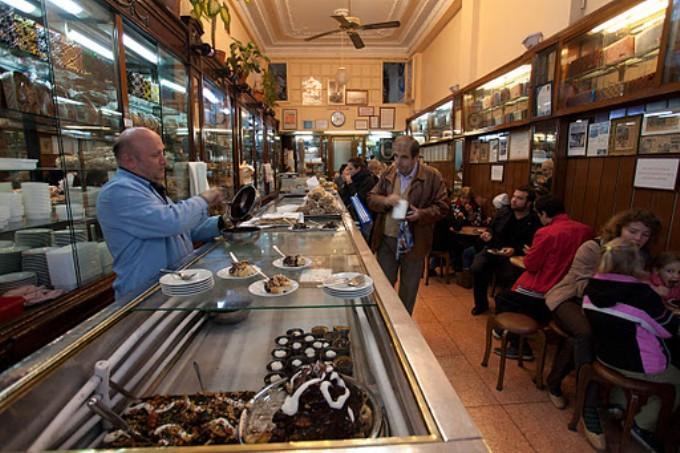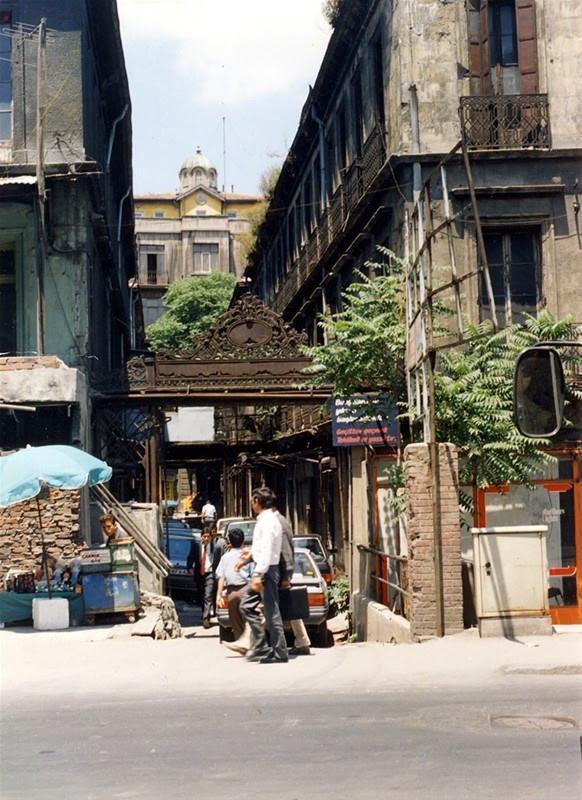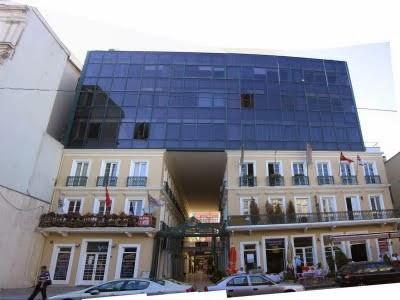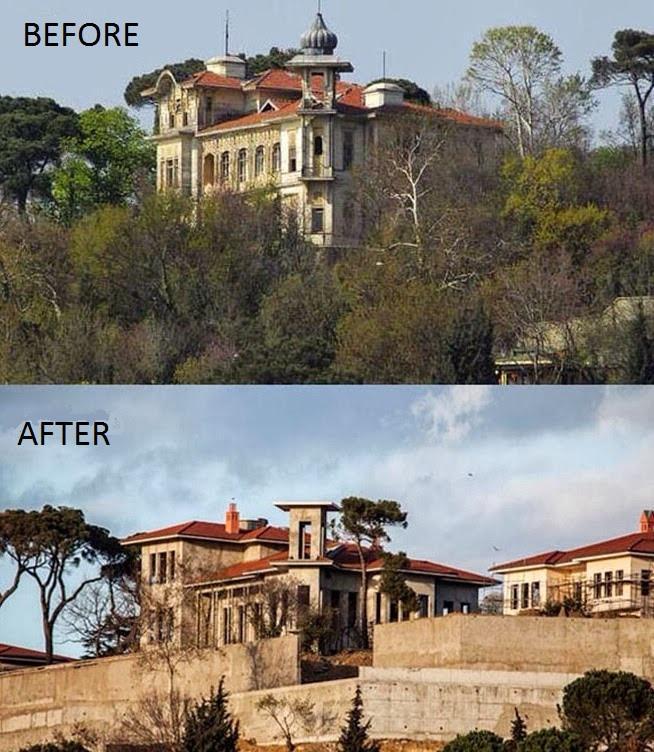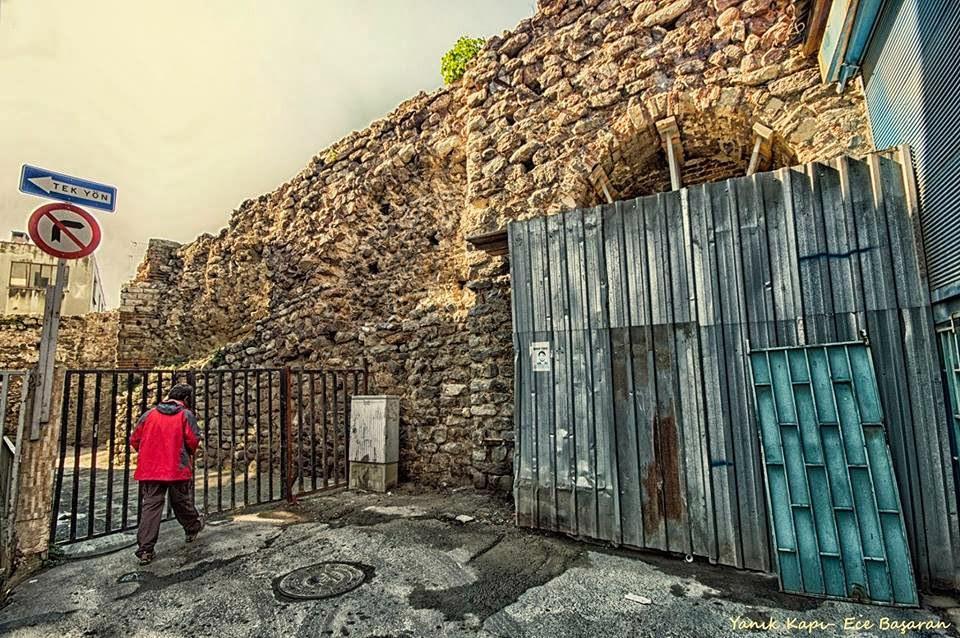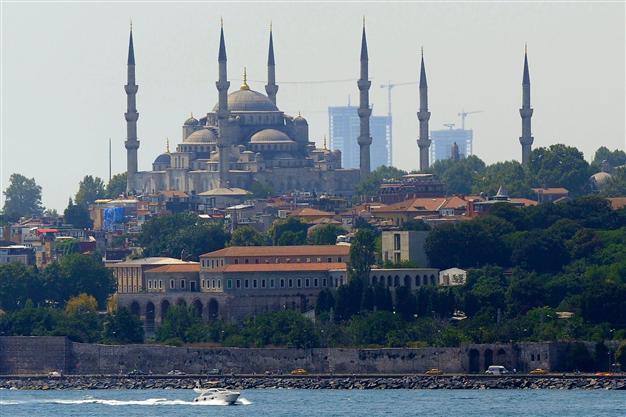10 urban heritage sites Istanbul lost in 2000s
ISTANBUL

"The Justice and Development Party's [AKP] era is remembered and will be remembered for construction,” Hürriyet Daily News columnist
Mustafa Sönmez wrote in January. As the construction boom continues, despite
warnings about a housing bubble, Istanbul has lost much of its “urban memory” in the past decade with damaged, moved or badly restored historic buildings and cultural assets, victimized by the ever-increasing appetite for shopping malls. Here are 10 such assets, in random order:
1) Cinema TheatersMajik Cinema, Turkey’s first cinema built in 1914 in the heart of the Beyoğlu neighborhood, was demolished and replaced by a shopping mall and hotel in 2007. Two more historic cinemas in the same neighborhood experienced a similar fate. Saray Cinema, which was built in the 1920s, became a shopping mall with a new façade in 2010, while Emek Theater, the historic home of Turkish cinema, was demolished in 2013 despite protests. (
Click here to read more about this story)
 2) İnci Patisserie
2) İnci PatisserieThe patisserie, which was founded by Lucas Zigoridis in 1944 and quickly become famous with its delicious profiterole, had to vacate its historic venue in 2012 under the transformation of the Cercle d’Orient complex, which also hosted Emek Theater, into a shopping mall. (
Click here to read more about this story)
 3) Robinson Crusoe Bookstore
3) Robinson Crusoe Bookstore
The iconic English-language bookstore Robinson Crusoe, which opened almost 20 years ago in Beyoğlu, has been forced to move from its well-known location on the central İstiklal Avenue. The store issued a goodbye message criticizing the recent invasion of chain brands on Istanbul’s main pedestrian avenue. (
Click here to read more about this story)
 4) Rebul Pharmacy
4) Rebul Pharmacy
How many pharmacies are there in the world that can easily be considered for UNESCO’s World Cultural Heritage Sites list? Rebul Pharmacy, founded in Istanbul’s Beyoğlu neighborbood in 1895 as Grand Pharmacie Parisienne, was probably the only one. The business, famous for its lavender cologne, announced this month that it will move to another building in the same neighborhood due to rent hikes.
 7) Cite Française
7) Cite Française
Also known as the French Alley or Cite Française, in the Karaköy neighborhood was built in the 19th century to host the offices of French and Russian merchants. Its unique texture was harmed when its restoration project was completed in 2000, putting a blue box on top of it and turning it into an entertainment center.
BEFORE

AFTER

8) The Mansion and the Grove of Vahdettin
Sultan Vahdettin, the last ruler of a nearly six-centuries-long Ottoman dynasty, was staying here in the 19th century before his ascension to the throne. The “restoration” of the mansion with a wonderful view of the Bosphorus was completed in April, which destroyed the historic texture of the building and removed several trees from its paradise-like grove.

The tower's onion dome was disappeared after the restoration.
9) Harup Kapı
The Golden Horn Metro Bridge, which was inaugurated earlier this year, was not only slammed for ruining the silhouette of Istanbul’s historical peninsula, but also led to the disappearance of the city’s last remaining gate built by the Genoese on the historic walls of Galata. The noble family of Doria that played an important role in Genoa from the 12th to the 15th centuries had built the gate and an epitaph, which are now both covered by metal panels due to the imposing bridge.
 10) The silhouette of Istanbul
10) The silhouette of Istanbul
Three skyscrapers constructed in the Zeytinburnu district on the European side of Istanbul are still clearly visible in the panorama behind the Süleymaniye Mosque on the city’s historic peninsula despite court rulings. (
Click here to read more about this story)

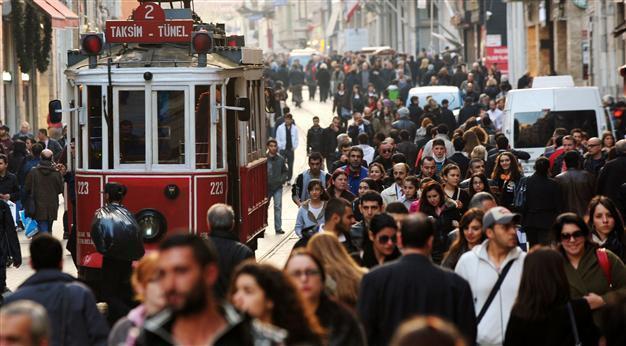 "The Justice and Development Party's [AKP] era is remembered and will be remembered for construction,” Hürriyet Daily News columnist Mustafa Sönmez wrote in January. As the construction boom continues, despite warnings about a housing bubble, Istanbul has lost much of its “urban memory” in the past decade with damaged, moved or badly restored historic buildings and cultural assets, victimized by the ever-increasing appetite for shopping malls. Here are 10 such assets, in random order:
"The Justice and Development Party's [AKP] era is remembered and will be remembered for construction,” Hürriyet Daily News columnist Mustafa Sönmez wrote in January. As the construction boom continues, despite warnings about a housing bubble, Istanbul has lost much of its “urban memory” in the past decade with damaged, moved or badly restored historic buildings and cultural assets, victimized by the ever-increasing appetite for shopping malls. Here are 10 such assets, in random order:
